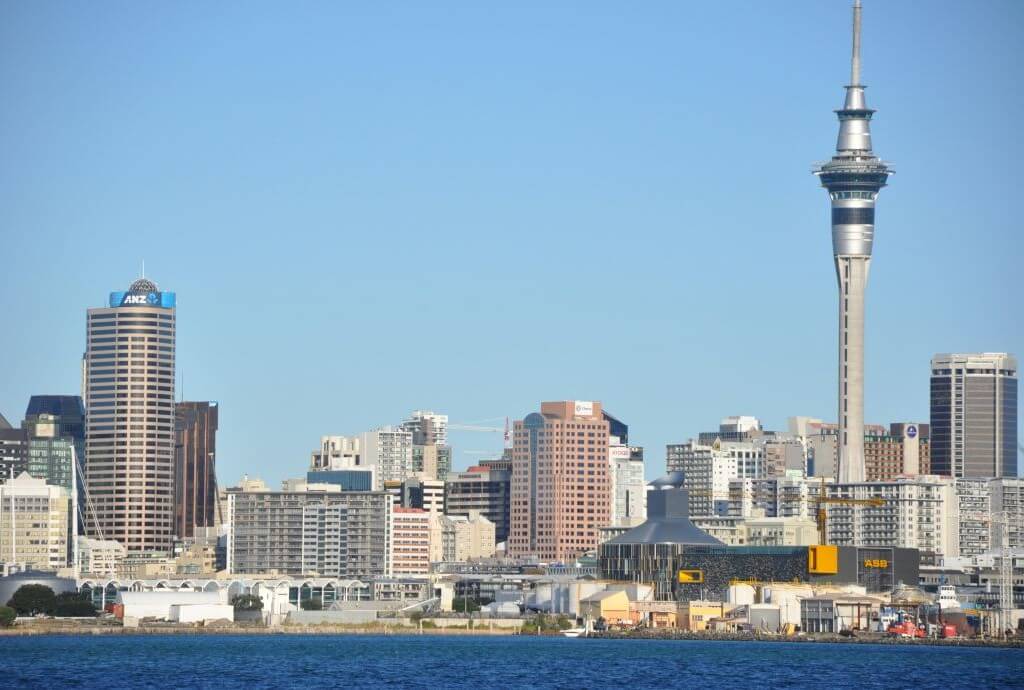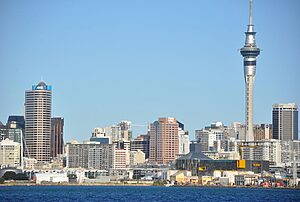In brief
- NIWA/MetService rainfall records for Christchurch are inconsistent, incomplete, and often wrong.
- Historic data from newspapers shows far more extreme weather than current “records” suggest.
- Agencies falsely claim recent events are unprecedented, fuelling climate change narratives.
- If they don’t know the past, they can’t measure change.
- Science Minister Reti must step in – NIWA needs an intervention.
Last week’s storm damaged more than cars and houses, it ripped away what little credibility the newly merged NIWA MetService had left on climate change.
What do I mean by that?
A “change” in climate can only be measured against a known baseline. If you don’t know the baseline, then your claims that the climate has changed are meaningless. The phrase “pre-industrial climate” is thrown around earnestly by climate scientists and the media, but here’s the thing: in NZ, neither NIWA nor the media have a clue about our pre-industrial climate.
Proof that NIWA/MetService don’t know what they don’t know rained down in buckets last week in Christchurch.
“Christchurch experienced its wettest April day since MetService records began in 1943,” reported The Press, “and was in the top five wettest days recorded all year round, meteorologist Mmathapelo Makgabutlane said.
“Between 9am Wednesday and 9am Thursday, Christchurch recorded 80.2mm of rain, nearly double its April average of 44mm.
“The city’s wettest day on record was in January 1980 when 110.4mm fell.”
Let’s correct the MetService meteorologist. Christchurch’s 1980 record from 3 January was 150mm, not 110mm. Here’s how The Press reported it on 4 January 1980:
“In Christchurch, 150 mm of rain fell in the 24 hours to 9 a.m. yesterday; This was the highest rainfall since records were first taken in 1940. The previous high was slightly more than 124 mm, in April, 1974.”
Now, the sharp-eyed amongst you may be asking the question when did MetService rainfall records begin in Christchurch? 1943 or 1940?
That naturally creates even more questions:
· Why is NIWA/MetService missing the first three years of Christchurch rain records?
· Why do the NIWA/MetService records in 2025 wrongly record a 110mm rainfall back in 1980 when reports at the time clearly state it was 150mm and compared it to the previous record of 124mm from 1974?
· Why does NIWA/MetService not have a record of 124mm in 1974, if their records are not missing any data?
· How does any of the above reconcile with the assurance of previous Science Minister Judith Collins that: “As the Minister of Science, Innovation, and Technology, I take your suggestion that NIWA has misled Parliament very seriously. I have had my officials engage with NIWA to ascertain the facts. My officials inform me, based on the explanations provided by NIWA, that they do not believe Parliament has been misled. This is on the basis that: No historical climate records have been lost… I accept these explanations. Accordingly, I confirm that I continue to have confidence in NIWA and its board.”
· How many strikes does NIWA get before the Board and management are out for misleading their Ministers?
· Three strikes? Nine lives?
All good questions, and in my view, they point to irrefutable evidence that our climate agencies are flying blind on our past climate.
These kinds of inaccuracies are creeping into the media – and therefore public consciousness and the official record – with virtually every single weather event these days.
The saddest thing, however, is that you still haven’t heard the full scale of how much NIWA doesn’t know what it doesn’t know. In the Christchurch Press report of the April 1974 “124mm record”, the MetService at the time was able to quote an earlier record from April 1925 of 123mm. So clearly, records didn’t “begin” in 1940 or 1943. Where have these records vanished to?
And here’s the kicker: In 1974, they were able to locate these records without computers.
Even so, in 2025, we have the advantage of nearly two centuries of newspaper articles now digitized at PapersPast, so we can now see even further back in time, to 1886, and an extreme rainstorm that Christchurch has never seen since.
“Mr J. B. Stansell’s record of the rainfall for the 24 hours ending…9 a.m. on Saturday, May 15, the amount of rainfall registered was no less than 6.98 inches. This is remarkably heavy,” reported the Lyttelton Times in 1886.
Converting inches to mm, that is a 177.3mm deluge in 24hrs, compared to the 80mm from last week and what NIWA/MetService claims is Christchurch’s all-time record of 110.4mm in 1980 (actually 150mm, as reported at the time)
“Ahhh”, I hear the skeptical reader saying, thinking perhaps they’ve caught me out, “who is this ‘J. B. Stansell’? Just some suburban peasant armed with a non-scientific bucket and his own ‘reckons’? We can’t rely on old newspapers. We must only trust NIWA, who know how to do the science properly.”
Stansell was no suburban peasant. He was the retired Government Meteorologist for Christchurch, as his 1889 obituary eloquently explains:
“As an expert in metallurgy and meteorology, he has been of immense service to the community. He was formerly employed by the Government as a meteorological observer, but since the days of retrenchment, this office has been abolished, and Mr Stansell has supplied the public with information voluntarily. As librarian to the Philosophical Institute, he was remarkable for his assiduity and attention to duty.”
A trained meteorologist and assiduous record-keeper from 1886, whose attention to detail I would put money on ahead of NIWA’s, any day of the week.
Christchurch’s all-time rain record, it turns out, is not NIWA’s 110mm but is more than 1.6x higher at 177mm in 24 hours.
In the grand scheme of things, NIWA/MetService knows nothing of the pre-industrial climate of Christchurch, or anywhere else in NZ for that matter. Therefore, every time they announce some new “record” and implicitly or explicitly attribute it to climate change, it is not trustworthy.. They don’t know about New Zealand’s past climate. They’re guessing, and getting it wrong.
Why is this relevant? Because we are being told in virtually every news report that New Zealand’s weather is getting more extreme, and that this is consistent with climate change theory. But are we really getting more extreme, and compared to what?
Last week’s storm threw up another classic example. Not far from Christchurch, the Banks Peninsula township of Akaroa received a drenching of 236mm of rain in 24 hours. Surprisingly, NIWA didn’t tweet that this was a new record. Yet only two years ago, when the same site recorded 199mm, NIWA crowed:
“Akaroa…has provisionally observed its wettest day on record, on [sic] 198.8mm from 9am Saturday-9am Sunday. Records at our climate station there began in 1978.”
So, given that last week’s rain broke NIWA’s previous “record”, it’s interesting that NIWA said nothing about the 236mm downpour.
However, anticipating they might, I decided to research further back than 1978, to climate records missing from NIWA’s database.
What I found was multiple deluges from 80 years ago or longer, of up to 298mm in 24 hours, far beyond anything seen in the supposedly heat-fuelled climate change era, where – the theory goes – a warmer atmosphere supposedly increases rainfall.
As the trendline shows, under climate change our weather has actually been less extreme than our colder past.
The same is true about heat extremes, as Centrist recently reported here:
Nor is it just Centrist research showing that we live in a less extreme climate today than our great-grandparents did. This Otago Regional Council graph from 2016 shows how less rain is falling in our warmer climate:
It would be tolerable if all this misinformation about “records” and “extreme events” were only coming from an awkwardly passionate but misinformed teen on a School Strike For Climate protest. But it’s not: this climate BS is coming directly from climate agencies and feeding into government policy that every single New Zealander will pay thousands of extra dollars in taxes, prices, fees and insurance premiums for.
Treasury relies on NIWA/MetService. So does the Environment Ministry and the Climate Change Commission, and every urban planning authority in NZ. But it seems like performative handwringing based on talking points has replaced actual research.
No matter where you look, there’s rapidly growing evidence that the often-repeated claim that “climate change means higher rainfall and more frequent extreme weather events” is a crock.
Is it possible that the real pre-industrial climate in our cold, low-carbon past is actually a more vicious and dangerous climate than scientists are telling us? Are climate agencies like NIWA knowingly refusing to publish that data because they know it would be the Emperor’s new clothes moment?
How could they possibly justify the future climate “extreme” scare stories if the public knew that the cold past was much more extreme than today’s?
In 2023, I published the original Climate of Fear study, which found that a Cyclone Bola-sized (or bigger) storm hit NZ every year on average between 1868 and 1890. That study opened with this newspaper eyewitness report about the destruction of Greymouth:
We haven’t seen anything close to that in the modern climate change era in New Zealand.
Nor have we seen, in our current era, Australian-style bushfires burning down entire towns during heatwaves, as happened to Norsewood in Hawke’s Bay:
As I wrote in Climate of Fear, by the time it was over, nearly 300 people were homeless:
“Forty buildings were destroyed and twenty families with 250 children between them (yes, you read that right) were left homeless. The firestorm struck without warning:
“About 10 o’clock a furious gale rose and brought sparks from clearings some distance away. The winds prevailing the previous days had dried everything, and the grass and logs caught fire, and spreading, the fire was soon racing over the country towards Norsewood village.
“Unfortunately, there were very few men at home, the majority being away at work. The women and the few men in the settlement were powerless to check the spread of the fire, as the sparks were flying as thick as hail. By superhuman efforts a few places were saved with wet blankets. Aggravated by the terrific force of the wind, it was seen that to stay in the village was impossible, and the women and children hurried away.”
But the core of the CoF report was storm data. Now, for the first time, Centrist has continued to plot major cyclones and storms after 1890 through to the present day to provide an even more compelling comparison of how wild our weather was before CO2 emissions increased, and how wild it is now.
The results will shock you.
COMING UP: PART TWO



















